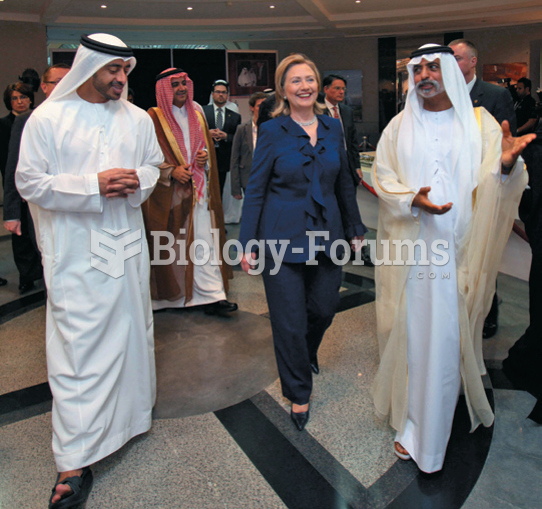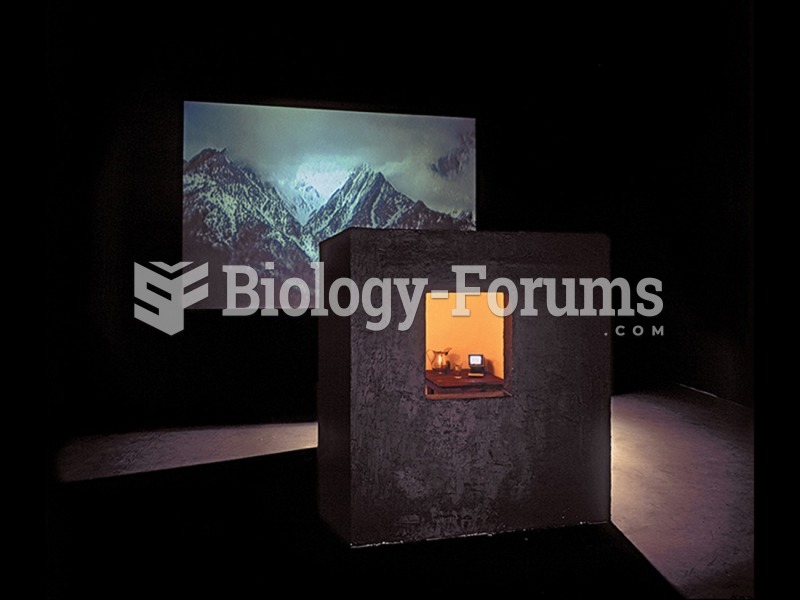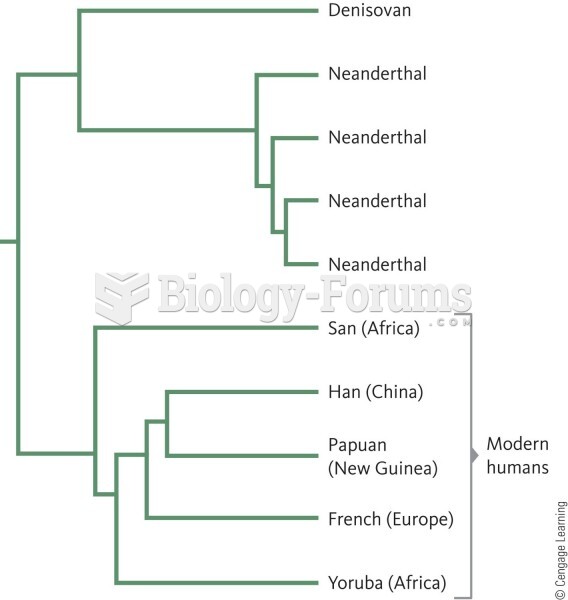|
|
|
Approximately 500,000 babies are born each year in the United States to teenage mothers.
Human kidneys will clean about 1 million gallons of blood in an average lifetime.
Of the estimated 2 million heroin users in the United States, 600,000–800,000 are considered hardcore addicts. Heroin addiction is considered to be one of the hardest addictions to recover from.
In 1886, William Bates reported on the discovery of a substance produced by the adrenal gland that turned out to be epinephrine (adrenaline). In 1904, this drug was first artificially synthesized by Friedrich Stolz.
Looking at the sun may not only cause headache and distort your vision temporarily, but it can also cause permanent eye damage. Any exposure to sunlight adds to the cumulative effects of ultraviolet (UV) radiation on your eyes. UV exposure has been linked to eye disorders such as macular degeneration, solar retinitis, and corneal dystrophies.
 “Mission Accomplished” proclaimed the banner on the USS Abraham Lincoln, where on May 1, 2003, Presi
“Mission Accomplished” proclaimed the banner on the USS Abraham Lincoln, where on May 1, 2003, Presi
 A seemingly anonymous well-wisher from the crowd greets President Bill Clinton. When Clinton was ...
A seemingly anonymous well-wisher from the crowd greets President Bill Clinton. When Clinton was ...
 Hillary Clinton broke through the glass ceiling in politics when she was elected senator from New ...
Hillary Clinton broke through the glass ceiling in politics when she was elected senator from New ...




